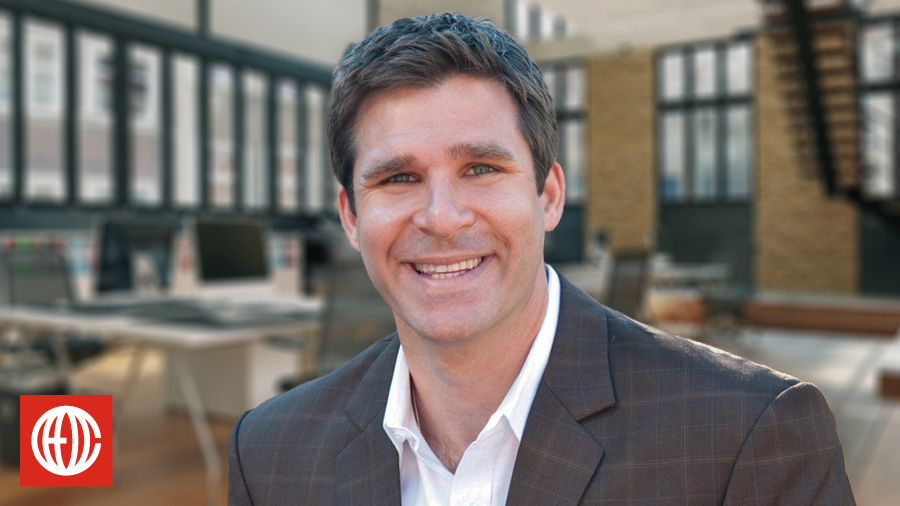Guest: John Giegerich, a coach at CEO Coaching International. John has been a top financial services executive and sales leader with a record of successfully growing multiple business units while assisting private and public companies with access to commercial and investment banking products.
Episode in a Tweet: Is your sales team hearing what your clients really need?

Quick Background: Accelerating your company’s growth rate involves much more than just improving the sales skills of your team. It takes a combination of truly listening to and understanding what your clients need and positioning your people, services, and products as the ideal, one-stop solution.
On today’s show, John Giegerich shares five ways that businesses that have a solid foundation in place can take that next step and empower their sales force to deepen client relationships and generate BIG sales.
Keys to Better Listening and BIG Sales from John Giegerich
Prepare your company to hear.
A company that hasn’t fine-tuned itself for optimal performance is never going to be as responsive to clients’ needs as it could be. John’s listening framework assumes that you’ve already mastered three essential elements:
1. Define your go-to-market strategy. John says, “You have to have a strategy that targets companies that need your product or service. Listening to clients better won’t do you any good if you try to sell your product or service to somebody who doesn’t need it.”
2. Recruit, coach, train, and reward top talent. “When some people think of sales, they think of the old-school salesperson who takes you out for a nice dinner and then tries to sell you a product. There are not many companies or organizations that are interested in hearing from those salespeople anymore. The type of salesperson they’re looking for is the salesperson who understands the client’s business and brings relevant solutions that will help them achieve their goal.”
3. Execute best practices with discipline and focus. “Too many sales organizations go out and try to sell wherever they can. When times are good and they’re selling, it’s great. And then when sales are bad, what happened? You had no discipline around executing the things that are important to build success every day, every week, every month, every quarter, every year.”
Once your company has these fundamentals down, you’re ready to move on to John’s five-step listening process.
1. Develop a personal connection and trust.
Authenticity has arguably never been more important to a company’s success. Until face-to-face business is the norm again your marketing, your messaging, and your sales pitch have to cut through that digital barrier and stand out in an increasingly crowded online marketplace. The best salesperson in the world won’t close a BIG new account if any piece of that puzzle feels phony to clients and prospects.

John says, “Anyone is going to see through a fake attempt to develop a personal relationship. It’s about having a desire to get to know someone better on a personal level, and also try to understand their business more deeply. A sales training program I went through years ago had a catchphrase: ‘Period, pause.’ You ask your clients a question, and you pause, and wait for them to answer. Too many people want to fill the void of silence with noise.”
2. Understand the client’s business and strategic plan.
Once your sales people have made that initial connection, it’s important they learn how to step back and assess the real purpose of this relationship. Your client isn’t looking for a best friend, they’re looking for solutions, upgrades, and new opportunities for growth.
“If someone likes you but they don’t think you understand their business and what they’re trying to accomplish,” John says, “they’re really not interested in hearing what you might have to offer to them. They don’t think you’ll be offering it in an informed way. So it’s critical you understand their business, their goals and objectives, and where they’re trying to go.”
“The Challenger Sale” suggests one strategy that John really likes: having your team position themselves as consultants rather than pure sellers. Instead of asking a client what they’re worried about, a salesperson who really knows that client should be able to anticipate potential problems and offer your products or services as means to stay ahead of the curve.
Another powerful tool is the CEO Coaching International Crystal Ball. The same exercise you use at the beginning of every year to set BIG goals can also help your clients see what they want and how you can help them get it.
3. Offer creative ideas and relevant solutions.
“A lot of salespeople and sales organizations at least do an okay job of steps one and two,” John says. “Then they say, ‘Now we have a solution, let’s go and try and sell it to them.’ When in fact, their solution is not relevant to the issue the company is facing or the goal that they’re trying to achieve. It’s critical that you look at your solutions and only pick the ones that will actually help clients achieve what they’re trying to achieve and then work to deliver those to them.”
Depending on your business, the creative piece of the solution could be an opportunity to really wow that customer. But don’t let your sales people or your design pros wander so far outside of the box that they stray into irrelevance. John advises, “What people are looking for today is a customized solution that fits perfectly with what they’re trying to achieve.”
4. Prioritize the client’s business.
Setting and enforcing work-life boundaries has been a hot topic during the WFH era. Some of your clients will view those boundaries as ironclad and expect you and your team to respect them. However, salespeople who are willing to put the client’s needs ahead of their own — even as the clock starts to tick past six on a Friday — are going to reinforce the value that your company brings to their business.
“Your thought process has to be, what can I do to help this person?” John says. “Am I going to wait until tomorrow morning to call them back? Am I going to wait until Monday if they’re facing an issue on Saturday? No. You may call and leave them a voicemail, but you at least show them, ‘I’m thinking of you.’ It’s about making the effort. And that’s showing you’re putting yourself in their shoes and prioritizing what they’re trying to accomplish versus what you’re trying to accomplish.”
5. Empower your team to solve problems.
We’ve all heard about the Nordstrom manager who helped a customer return a set of tires even though Nordstrom doesn’t sell tires. Call up Zappos and a customer service rep will try to help you answer any question you have — and not just about shoes.
These might be extreme examples, but that’s the kind of emphasis that the best companies place on solving customer problems as quickly as possible. In the words of customer service expert John DiJulius, “While it’s not our fault, it’s still our problem.”
“The critical piece for this is making sure your frontline team has the authority to make decisions,” says John Giegerich. “And it doesn’t matter whether it’s the sales team or it’s the customer service team. It’s making sure you’re pushing authority out to the front line so that they can quickly resolve problems that your client may have.”
When you’ve empowered employees at every level to make those decisions, what you’re also doing is creating a culture of accountability. That culture will integrate and reinforce every aspect of this listening framework into a self-perpetuating system that’s unique to your organization.
“It’s the total package that makes this work,” John says. “You can’t do one piece of it well and do poorly at another piece. This has to resonate through the entire organization, and particularly the sales organization, to make sure we’re successful by meeting our clients where they are, understanding what they’re trying to accomplish, and then helping them accomplish it.”
Top Takeaways
1. Define your business and your strategy or your pitch will fall on deaf ears.
2. Make a real connection. Clients and prospects will respond to authentic curiosity and empathy. They’ll tune out a hard sell.
3. Do more than sell. Coach your salespeople to become indispensable advisors and sales will follow.
[Tweet “Is your sales team hearing what your clients really need?”]
About CEO Coaching International
CEO Coaching International works with CEOs and their leadership teams to achieve extraordinary results quarter after quarter, year after year. Known globally for its success in coaching growth-focused entrepreneurs to meaningful exits, the firm has coached more than 1,500+ CEOs and entrepreneurs across 100+ industries and 60 countries. Its coaches—former CEOs, presidents, and executives—have led businesses ranging from startups to over $10 billion, driving double-digit sales and profit growth, many culminating in eight, nine, or ten-figure exits.
Companies that have worked with CEO Coaching International for two years or more have achieved an average revenue CAGR of 31% (2.6X the U.S. average) and an average EBITDA CAGR of 52.3% (more than 5X the U.S. average).
Discover how coaching can transform your leadership journey at ceocoachinginternational.com.
Learn more about executive coaching | Meet our world-class coaches








